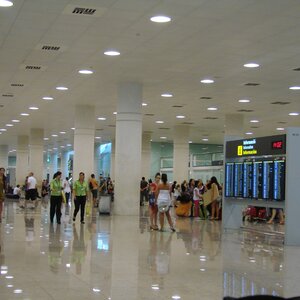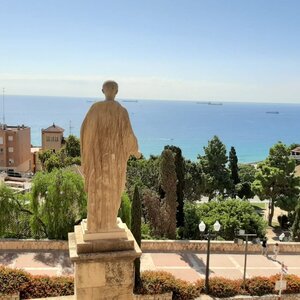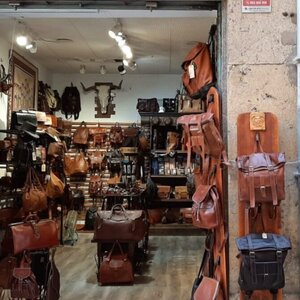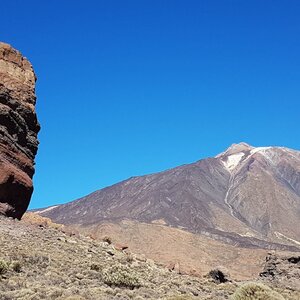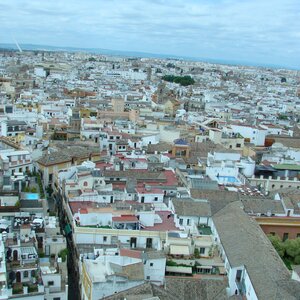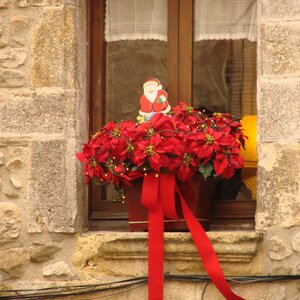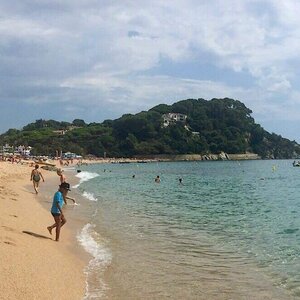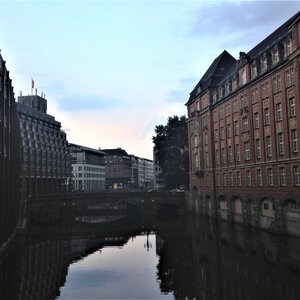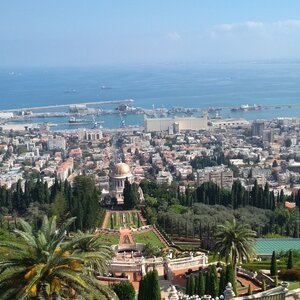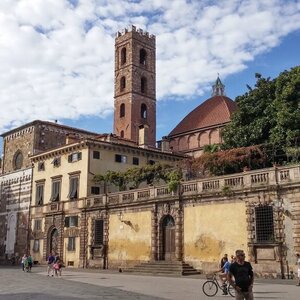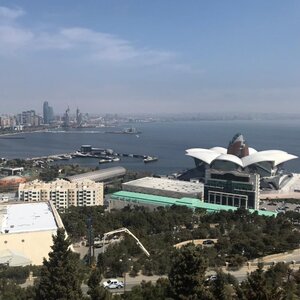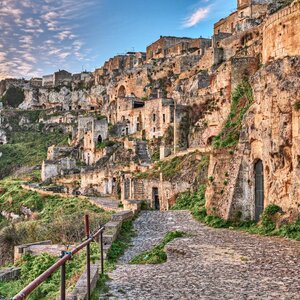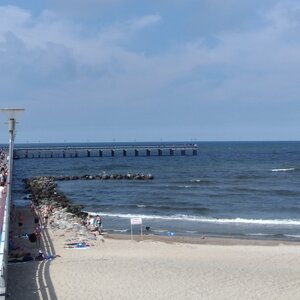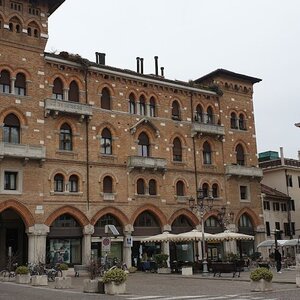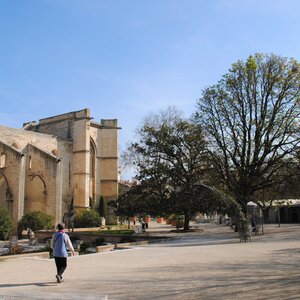Royal Palace (Palacio Real de Madrid)
Madrid has been the capital of Spain since 1561, and the Royal Palace is located here. However, the current monarchs do not live in this palace, and it is used for official ceremonies and as a museum.
When you visit the palace, you will see its real, rich interior decoration, a collection of paintings, weapons and even Stradivarius violins. The majestic building is surrounded by two parks: Parque Campo del Moro and Jardines De Sabatini.
- Mode of operation: in winter time (from October to March) — daily 10:00 — 18:00, in summer time (from April to September) — daily 10:00 — 20:00.
- Entrance fee: 10 €. Entrance to the parks at the palace is free of charge.
- Palace website
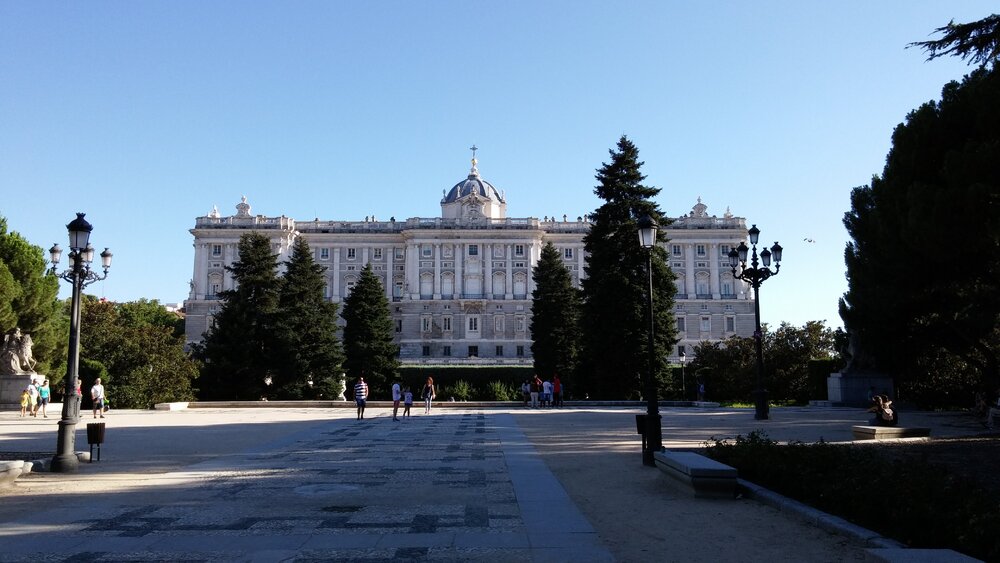
Plaza Mayor
The busiest place in the city is the Plaza Mayor, the capital’s main square. It was described by the great playwright Lope de Vega as the «navel of Spain». And he was right, in this central place of Madrid at different times, there have been many events: the execution of the Inquisition, official ceremonies, the announcement of the heir to the throne, public festivities, and even bullfighting!
This historic site appears to be a detached space surrounded by buildings on its perimeter, with a statue of King Philip III, made of bronze, in the center.
Walking around the Madrid Baroque square, taking in the spirit of history, and maybe even having a glass of cool sangria at a table in one of the cafes located on it, is a must when visiting the Spanish capital.

Puerta del Sol (Puerta del So)
Puerta del Sol, translated from Spanish as «Gate of the Sun», is another famous Madrid square. It is so called because until 1521 it was the site of the gateway to Madrid with the same name.
Near the square in the narrow streets are many colorful establishments where you can try paella.
Puerta del Sol is rich in sights. Here you will find the equestrian statue of Carlos III, the zero point of reference of all Spanish roads, the former Post House with its clock that announces the arrival of the new year to the people of Madrid.
And also in this square you will find the symbol of Madrid — a statue of a bear with a strawberry tree. Interestingly, there is no unambiguous opinion about the history of the bear. Some believe that the symbol originated in the 13th century, when during the war with the Muslims one of the Spanish troops used a bear on its coat of arms. After the battle, forests of strawberry trees were included in Madrid’s possessions, so both the bear and the strawberry tree were reflected in the city’s new coat of arms. Others believe that in the old days, there was a grove of strawberry trees on the site of Madrid, and thanks to them, bears also appeared in the neighborhood.
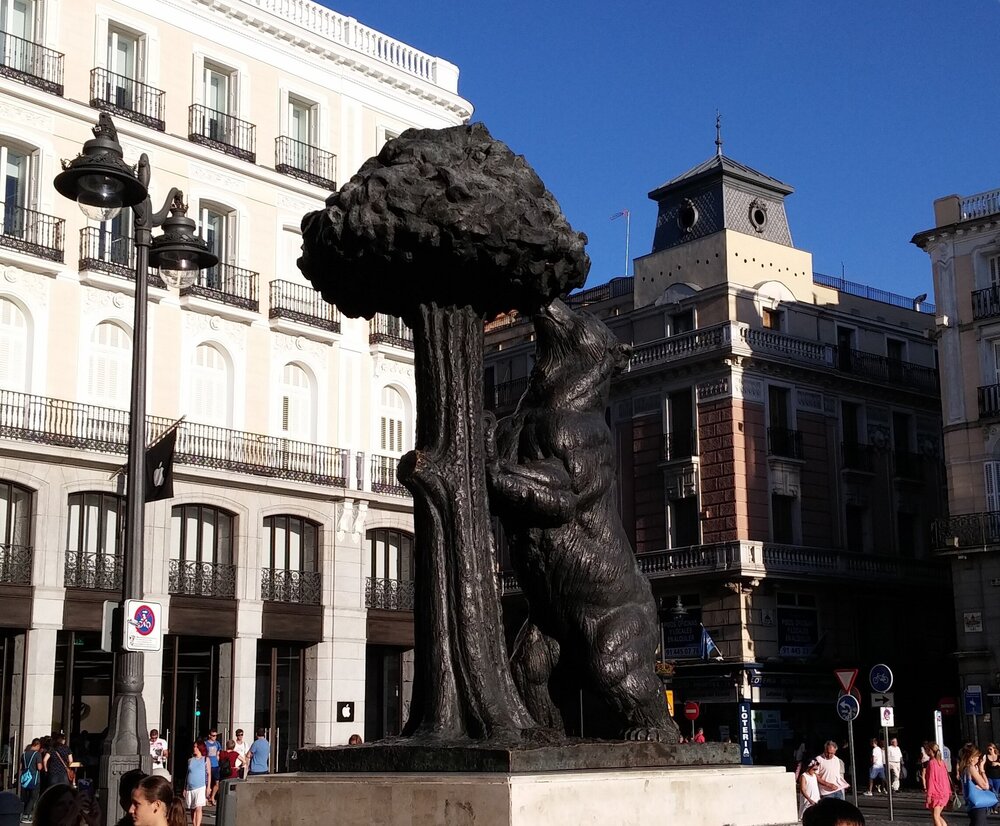
Boulevard of Arts (Paseo del Arte)
For those who can’t imagine their life without art, Madrid has a special place — the Boulevard of Arts. It concentrates the city’s main museums — the Prado, Thyssen-Bornemisza, Queen Sofia Modern Art.
The route along the boulevard begins with the Sibelis Fountain, built in 1782. In the middle of the fountain is a sculpture of the Roman goddess Cybele sitting in a chariot pulled by two lions. Once this fountain was not just a decoration, but had a practical meaning — it was used to draw water for the whole city. Opposite the fountain is the openwork Sibelis Palace, which is called «cream cake» because of its airy shapes.
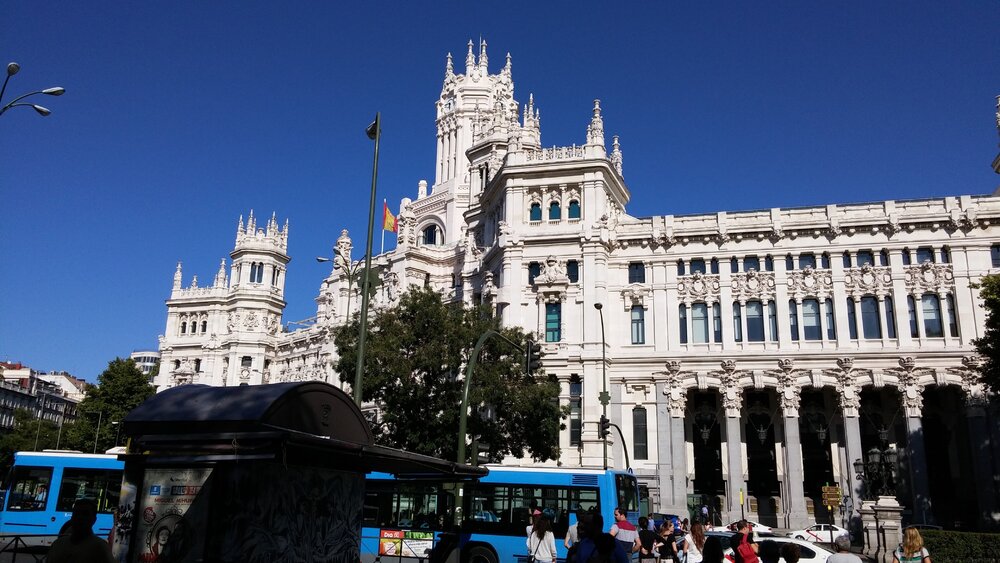
Museo Nacional del Prado (National Museum of the Prado)
Even not the biggest fan of art, the museum’s collections, which include works by great creators such as Goya, Velázquez, Rubens, Raphael, Bosch, El Greco and other famous Spanish and not only artists, will bring much pleasure.
You can visit the museum for free two hours before it closes. Of course, this is hardly enough time to explore the halls in detail, but it will be enough for a quick look around. And if you are on a holiday (for example, the Day of Spain), the entrance will be free all day. In both cases, you will have to wait in line.
- Working hours of the museum: Monday-Saturday — from 10.00 to 20.00, Sunday — from 10.00 to 19.00.
- Cost: 15 € (general ticket)
- Museum website

Alcala Gate (Puerta de Alcala)
Next to the Bueno Retiro Park, on Madrid’s longest street, Alcalá, is the gate of the same name, commissioned by Charles III. It was once the main entrance to the city, named after the road to Alcalá de Henares. At the moment, the gate is considered an architectural symbol of Madrid.
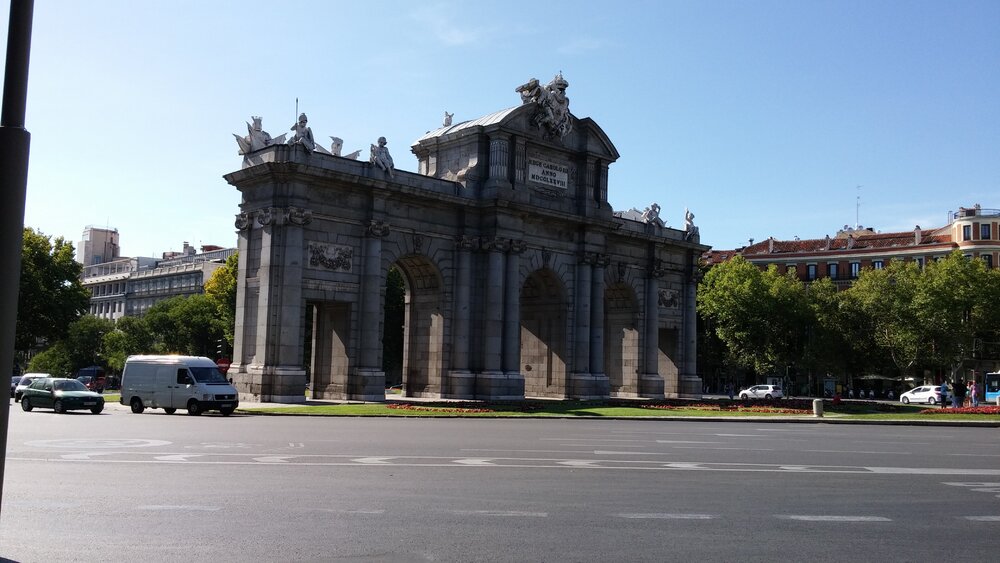
Parque del Buen Retiro (Parque del Buen Retiro)
This oasis amidst the noise of the city and a place of Sunday pastime for Madrid residents combines well-tended green spaces, buildings, fountains and sculptures. The main composition of the park is the statue of Alfonso XII in the semicircle of the colonnade on the shore of the lake. Here you can take a break on the steps under the statue after a walk around the city or rent a boat.
There are many interesting objects to see in the park, but two of them are worth a look: the fountain with the world’s only statue of the devil in the middle and the Glass Palace designed by Velasquez.

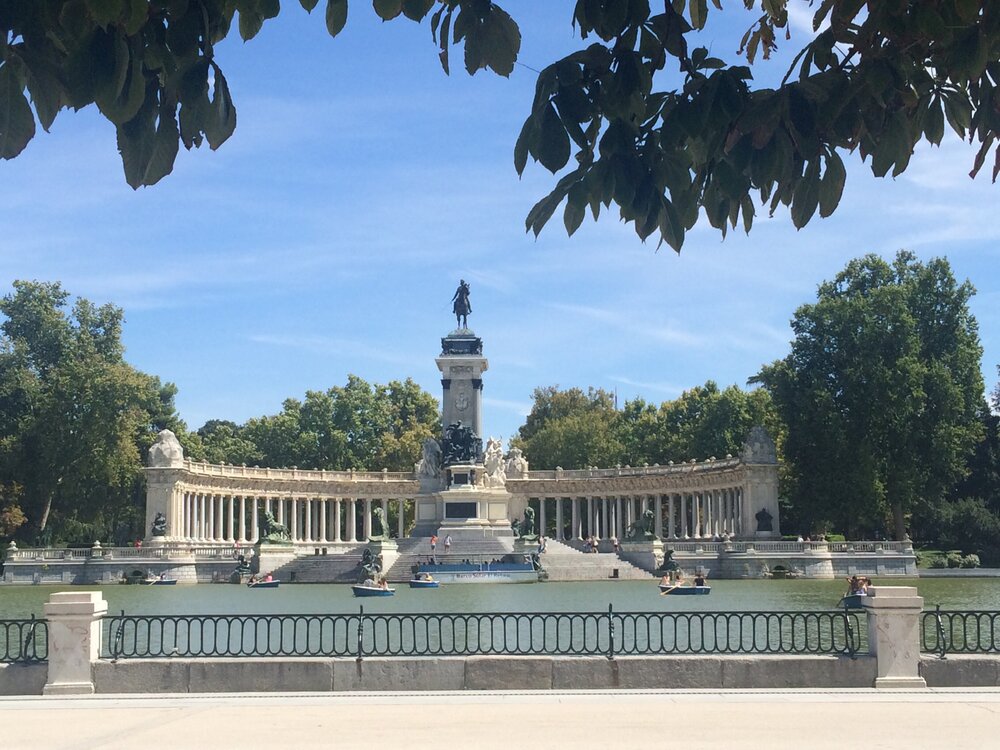
Atocha Station (Estación de Atocha)
If you are a fan of the Eiffel Tower, then take a look at the Atocha Station building in Madrid. It was built by Gustave Eiffel (together with Alberto Palacio and Henry St. James), a French engineer and the «father» of the tower. The station was shut down in 1992, and now trains leave from the adjacent Atocha Renfe station (from here you can leave to nearby cities as well as to Barcelona, Seville, etc.). But inside the old building there is much to see and do — there is a beautiful winter garden with tropical plants, a pond with turtles, small cafes and stores.

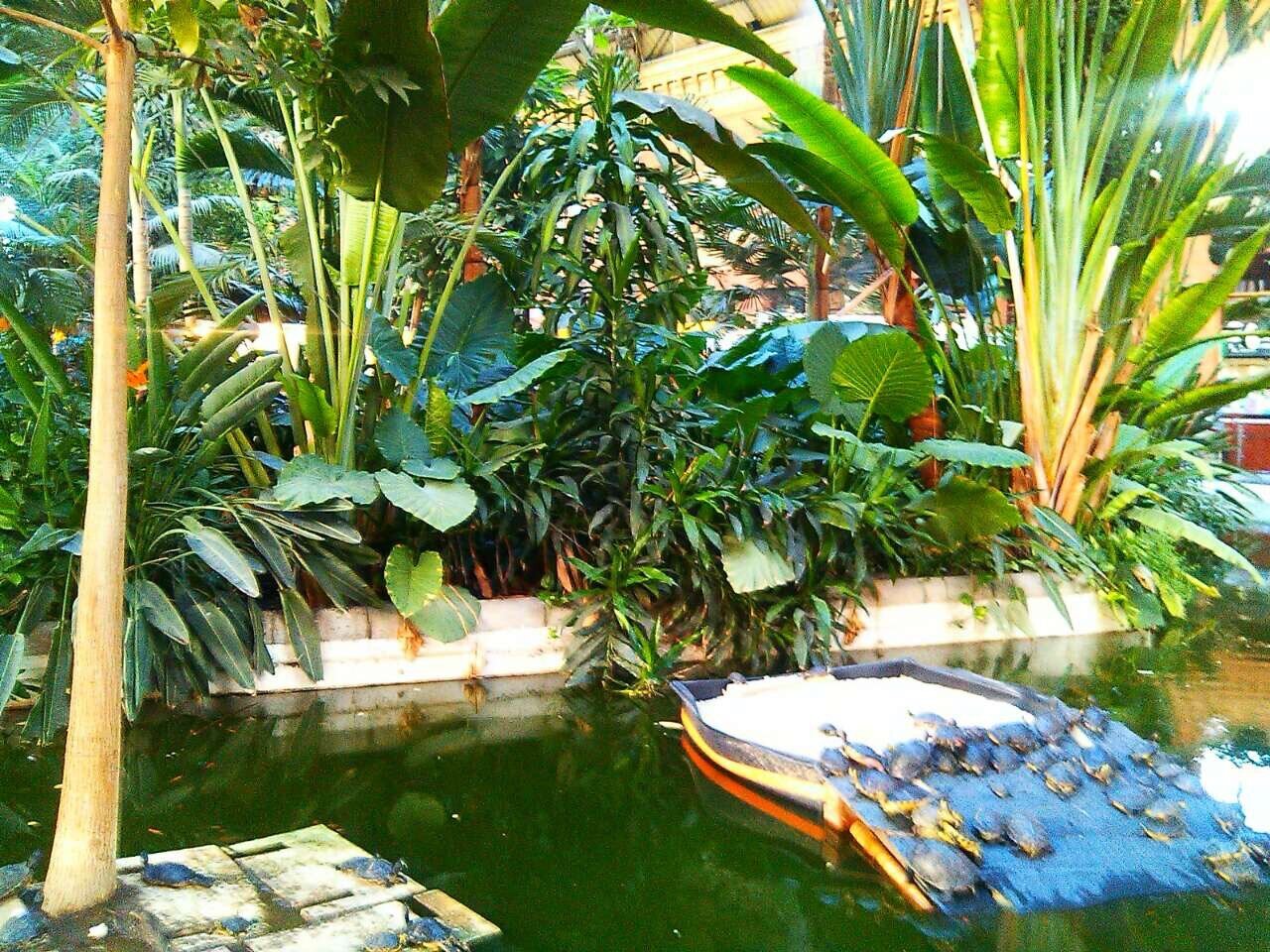
Gran Via
Shining store windows and luxury boutiques, inviting bustling bars and restaurants, sparkling movie theaters — it’s all about Gran Via. It was laid in 1910 by King Alfonso XIII. In the early twentieth century a skyscraper was erected here — the first in Europe (at least it was considered as such at that time), now this building houses a large Spanish company Telefónica.
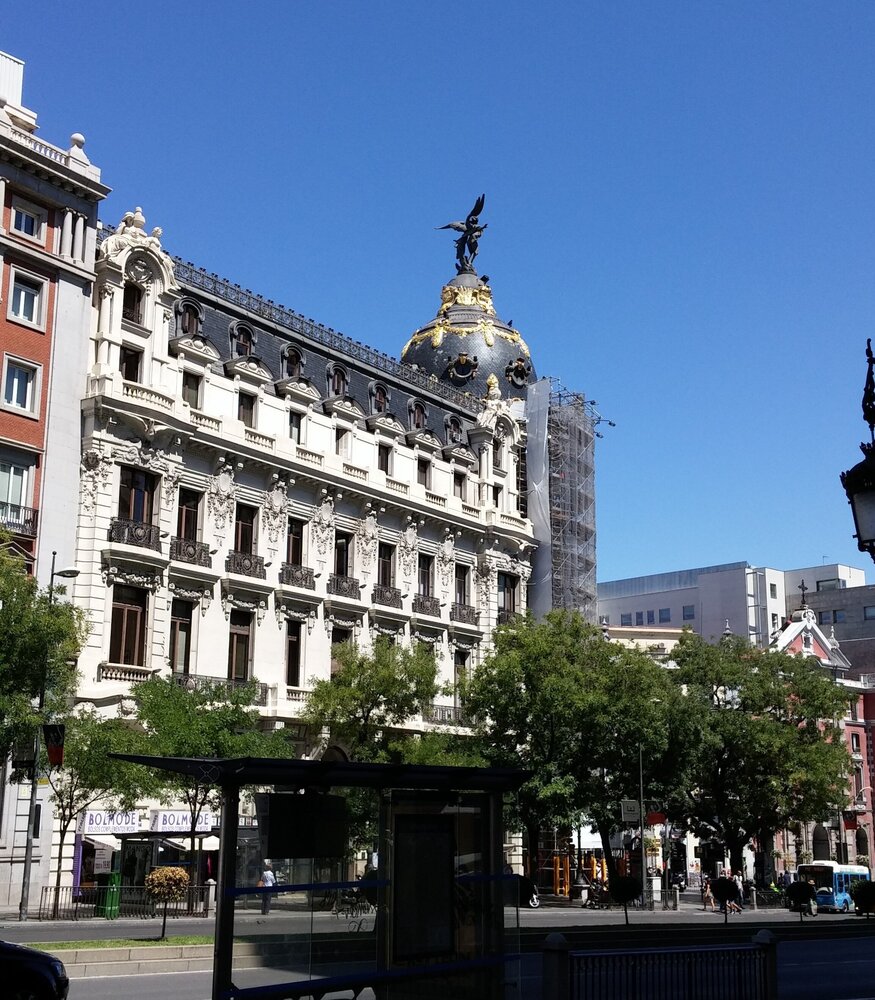
Santiago Bernabéu Stadium (Estadio Santiago Bernabéu)
The Spanish capital also has something to show to soccer fans. You can visit the Santiago Barnabeu Stadium, the home of Real Madrid, not only as a fan, i.e. during a game, but also as a tourist on a sightseeing tour. The stadium is some distance from the center and the attractions listed above, so it should be a separate item on your list.
What else to see in Madrid
In addition to the iconic places that Madrid has to offer, you should definitely see flamenco. This passionate dance performed by fiery dancers will not leave you indifferent. Walking around the center in the evening, you will easily find places where you can watch the performance. Some places also offer a glass of sangria as a gift.
What to bring back from Madrid
If you are not a fan of traditional magnets, you can bring Spanish delicacies such as jamon, olives, olive oil and wine as souvenirs for your friends and family. Clothing of local brands may also be to the taste of your loved ones. And of course for soccer fans — souvenirs with Real Madrid symbols.


